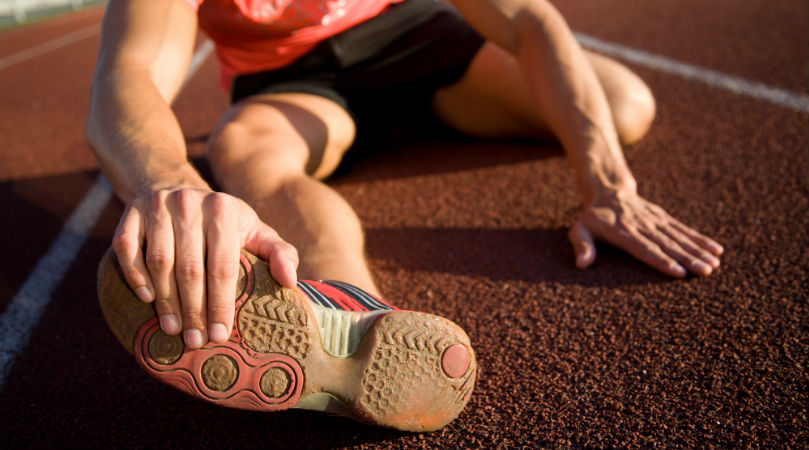At Wisconsin Foot Center, we love seeing so many patients of all fitness levels commit themselves to bettering their physical health! It’s great to see and we encourage all of our patients to increase their physical activity.
However, this unfortunately can also lead to injury. The human body is a phenomenal machine, but it can only take so much.
Active people may decrease their risk for diabetes, heart disease, and a host of other health issues, but they also increase their risk for common wear-and-tear overuse injuries and sports injuries.
While the right exercise plan and prevention will lessen the likelihood of these injuries occurring, there’s a certain degree of risk with physical activity. Luckily, we have many innovative treatment options to help get our patients back on their feet and doing what they love.
Common Foot And Ankle Sports Injuries We Treat
Sprain and Strains
Of all of the conditions we see here in the practice, sprains and strains are two of the most misunderstood.
We could speak at length about the particular medical considerations of these two conditions, but the gist of it is this: A sprain is the tearing of ligaments, which bind bones together. Strains are the overworking and tearing of muscles and/or tendons, which often results in painful spasms.
These two conditions are very similar, but symptoms of a sprain typically include:
- Discomfort
- A limited range of motion
- An audible “pop” at the first time of the sprain.
- Swelling or bruising.
Symptoms of a strain include:
- Sudden pain
- Swelling or brusing
- A limited range of motion
- Stiffness
- Thick knots within the affected muscles.
Heel pain
Whenever you walk, run, or jump, the heel is the first part of your foot to make contact with the ground. So it’s not surprising that heel pain is one of the most common painful conditions faced by athletes and active people. The force loads your heels take at impact can be significant!
It’s important to keep in mind that heel pain isn’t a diagnosis itself, but a symptom that can be produced by different kinds of specific injuries. Some of the most common include:
- Plantar fasciitis: a stabbing pain in the thick band of connective tissue on the bottom of the heel. It is extremely common among distance runners or those who spend most of the day on their feet, and symptoms may be worst with the first steps of the morning.
- Achilles tendinitis: an inflammation of the Achilles tendon, which connects the powerful calf muscle to the heel bone along the back of the heel.
- Sever’s disease: a form of heel pain that affects children, particularly active adolescents. It’s caused by inflammation of the growth plate of the heel, which is vulnerable to impacts in childhood before the skeleton reaches maturity.
Stress Fractures
Stress fractures are thin, almost microscopic cracks the develop along the surface of bones, typically in response to repetitive overuse from high-impact sports training.
When you don’t give yourself enough time to rest and recover, soft tissues that ordinarily absorb and dampen impact forces wear down. The leads to more force being transferred directly to bones, which can cause them to crack.
Symptoms typically include:
- Light bruising
- Pain that increases during and after activity and recedes after rest
- Swelling
Other Common Sports Injuries
A partial list of other common sports injuries we treat includes:
- Turf toe
- Shin splints
- Broken feet
- Broken toes
- Broken ankles
- Bruised toenails
- Ball of foot pain
- Neuromas
This is by no means an exhaustive list of all of the issues that a physically active could experience while pursuing their fitness goals. These are, however, some of the more common conditions we see in our waiting room.
Treatment Options for Sports Injuries
Thankfully, our team offers some amazingly effective and noninvasive treatment options for your sports injuries.
We treat every case as unique—because each one is! We always tailor our treatment plans to meet the individual needs of our patients, with a comprehensive approach. It’s important to determine not only the precise underlying causes of your injury (shoes, activities, training, etc.), but also your lifestyle and future activity goals.
Our recommendations could vary depending on your age, fitness level, condition, medical history and discomfort. However, there are a few tools in our kit that we typically consider when confronted with sports injuries:
- Orthotics: These useful devices are inserted into your shoes to provide whatever additional support, shock absorption, and even stability or motion control your feet may need. Our office provides prefabricated orthotics, as well as fully customized ones (made from bio-foam impressions of your feet), and will help you choose the right set for your needs.
- Surgery: This is usually reserved for only the most serious and traumatic sports injuries. In most cases we see better success and happier patients with less-invasive and more conservative treatments. It’s only when these treatments are exhausted or we have reason to believe that surgery would yield the best results for your specific condition that we recommend surgical treatment.
If you have any of the conditions outlined above or have reason to believe you might, don’t wait. Your sports and overuse injuries can heal, but they require medical attention. If anything, your injuries might get worse without the attentive care of a medical professional.
Contact Wisconsin Foot Center for more information. Dr. Andy Marso and our team are standing by! Contact us today!
Request an Appointment
© Wisconsin Foot Center. All Rights Reserved. Website & Marketing By Podiatry Growth


